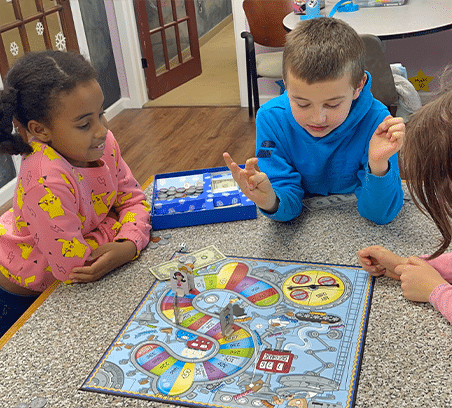In the realm of education, the significance of structured lessons and traditional teaching methods has always been paramount. However, an often underappreciated yet crucial aspect of learning, especially in early childhood, is incorporating play in learning. Far from being mere leisure, play is a powerful educational tool that fosters various developmental skills in children. This blog post delves into how play shapes the learning experiences of young minds, highlighting its role in fostering creativity, enhancing problem-solving abilities, and bolstering social interaction.
The Power of Play in Stimulating Creativity
Creativity is not just about artistic expression; it’s a way of thinking, a means of exploring possibilities, and envisioning solutions. Play provides a sandbox for imagination. When children engage in play, be it building blocks, role-playing, or drawing, they are in essence creating a world of their own. This act of creation is where imagination thrives and innovative thinking blossoms. Through play, children learn to think outside the box, approach problems with unique perspectives, and express themselves in myriad ways.
Problem-Solving Skills Developed Through Play
One of the most critical skills that play develops is problem-solving. When children play, particularly in unstructured formats, they encounter various scenarios that require them to make decisions, often leading to trial and error. Be it solving a puzzle, strategizing in a board game, or finding the best way to build a tower without it toppling over, play situations are rife with challenges that sharpen cognitive abilities. These playful experiences teach resilience and adaptability, skills crucial not just in academics but in life.
Enhancing Social Interaction Through Group Play
Social interaction is a pivotal component of play, especially in group settings. When children play with their peers, they learn the art of communication, negotiation, and cooperation. They understand the importance of sharing, taking turns, and empathizing with others’ feelings. This social learning is fundamental in developing interpersonal skills and emotional intelligence, helping children to build strong relationships both in childhood and later in life. The benefits of high quality early educational experiences have a profound impact on all aspects of an individuals adult life.
The Role of Parents and Guardians
The role of parents and educators is not only to facilitate play, but to participate as well. This can be done by providing children with the space, time, and resources to engage in play. It’s also essential to recognize that play should not be seen as a diversion from learning but as an integral part of it. Encouraging play is encouraging learning.
In summary, play is not just a way for children to pass the time; it is a critical tool in their learning and development. It fosters creativity, hones problem-solving skills, and enhances social abilities. As we continue to explore and understand the depths of play’s impact, it becomes clear that play is a cornerstone in the edifice of holistic education. By valuing and incorporating play in our educational approaches, we open a world of possibilities for our children’s growth and development.
10 Ways to Enhance Academic Activities with Play in Learning:
- Gamify Lessons: Transform traditional lessons into games. For instance, use board games for math practice or role-playing for history lessons. This approach makes learning interactive and fun.
- Storytelling and Role Play: Encourage students to create and act out stories related to the subject matter. This not only enhances creativity but also helps in understanding and retaining concepts.
- Outdoor Learning: Utilize outdoor spaces for lessons. Nature walks, scavenger hunts, and outdoor experiments can make learning more engaging and provide a fresh environment for exploration.
- Interactive Learning Stations: Set up stations around the classroom or home where students can engage in hands-on activities related to different topics, promoting active learning and exploration.
- Creative Arts Integration: Incorporate drawing, painting, and crafting into lessons. For example, create art projects related to science topics or historical events.
- Use of Educational Toys and Tools: Integrate educational toys like building blocks, puzzles, or science kits that align with the curriculum, allowing students to learn through manipulation and experimentation.
- Technology and Digital Games: Utilize educational software and apps that turn learning into an interactive digital playground. This is especially effective for tech-savvy students.
- Group Projects and Collaborative Activities: Encourage group work where students can collaborate on projects, fostering teamwork and social skills alongside academic learning.
- Music and Movement: Use songs, dances, and movement activities to teach concepts. This is particularly effective in language learning and memorization.
- Thematic Learning Days: Create themed days around specific subjects (e.g., Space Day, Ancient Egypt Day) where activities, lessons, and play are centered around that theme, making learning immersive and enjoyable.
Follow our newsletter!


